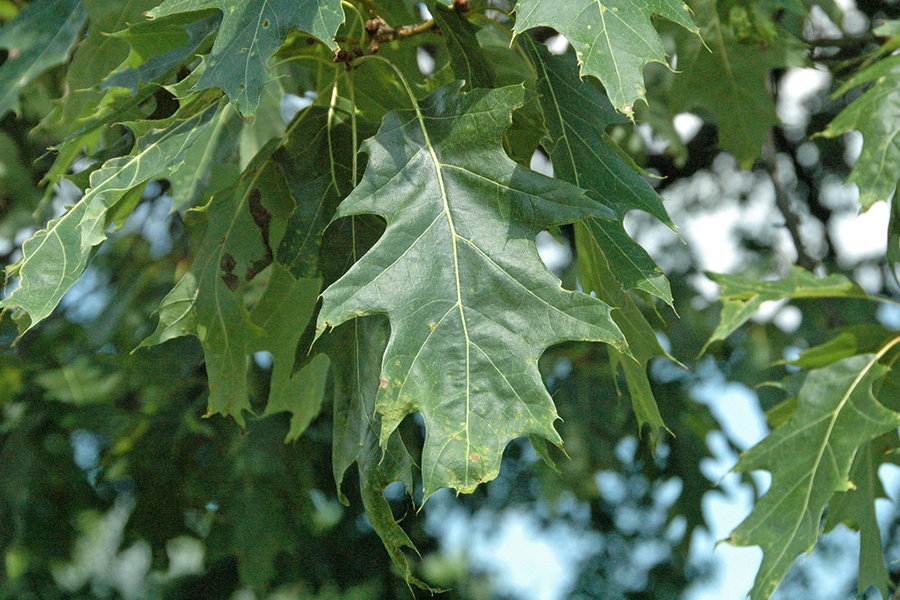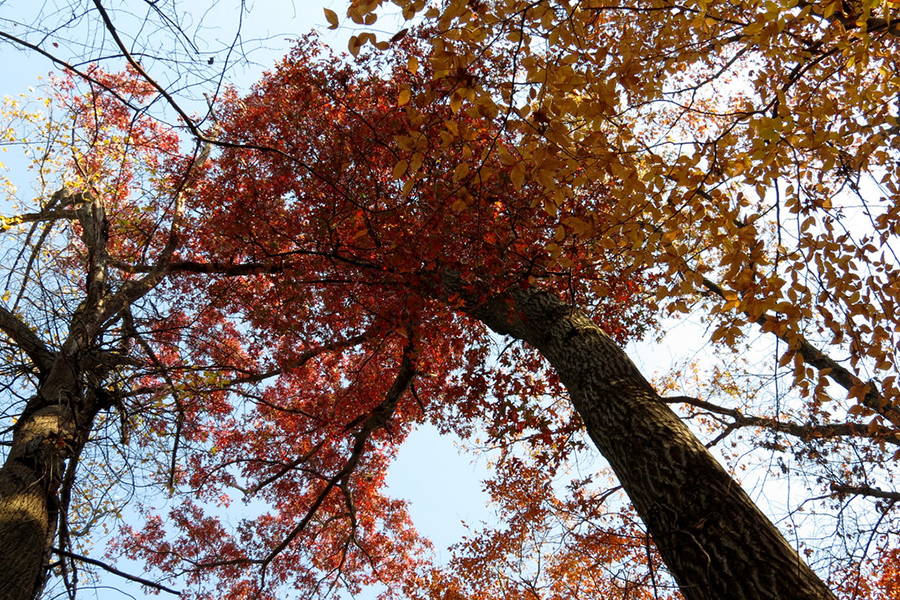Quercus rubra
The northern red oak is the largest oak native to New England known to be fast-growing and long-lived.
Location
Red oaks can be found in many places across the arboretum. If you walk from the corner of May and Lovell Streets along Larch Lane and up to Appleton Road trail, you should be able to spot at least one. Look out for their distinctive leaf structure.


History at Hadwen
Whilst we don’t have specific documents showing Hadwen planted red oak on his property, they were present on his property at least as early as 1882. In 1900, he wrote that he had various oak trees “of nature’s planting” up to four feet in diameter and sixty feet spread of limb. Hadwen believed that “when the oak is given ample space to develop and time to mature, but few trees can be compared to it in its variety of beauty changing with the seasons from the delicate form and color of the opening leaf, to the deep and glossy green of the summer and the gorgeous colored tints of the autumn.” In 1991, Hurricane Bob destroyed about 35 trees in the arboretum. One of the most significant losses was a seven-foot diameter red oak, believed to be more than 300 years old.
Keep Learning
Detailed Species Information
The northern red oak is a deciduous tree in the family Fagaceae native to North America. This species can be found growing throughout the eastern and central regions of the United States and southern Canada. It is a large tree, often growing over 90 feet (27 meters) in height and up to 6 feet (2 meters) in trunk diameter. In addition to being large, the red oak is also long-lived and relatively fast-growing. Some specimens of northern red oak reach up to 400 years of age.
The bark of the red oak is dark grey-brown or dark reddish brown with prominent ridges. The leaves are simple and alternately arranged on the stem. Typical of many oaks, the leaves have seven or nine lobes with pointed tips. The flowers of the northern red oak are hanging catkins that emerge in spring. The large acorns produced by the tree are an important food source for wildlife, including squirrels, deer, insects, and birds. The red oak is a hardy species, surviving in a variety of habitats but it prefers well-drained soil near streams.
The red oak is an economically significant tree and valued for its strong, durable wood in a variety of applications such as flooring, furniture, cabinets, and firewood. It is also a popular tree in landscaping due to its attractive fall color, dense foliage for shade, and large size.
